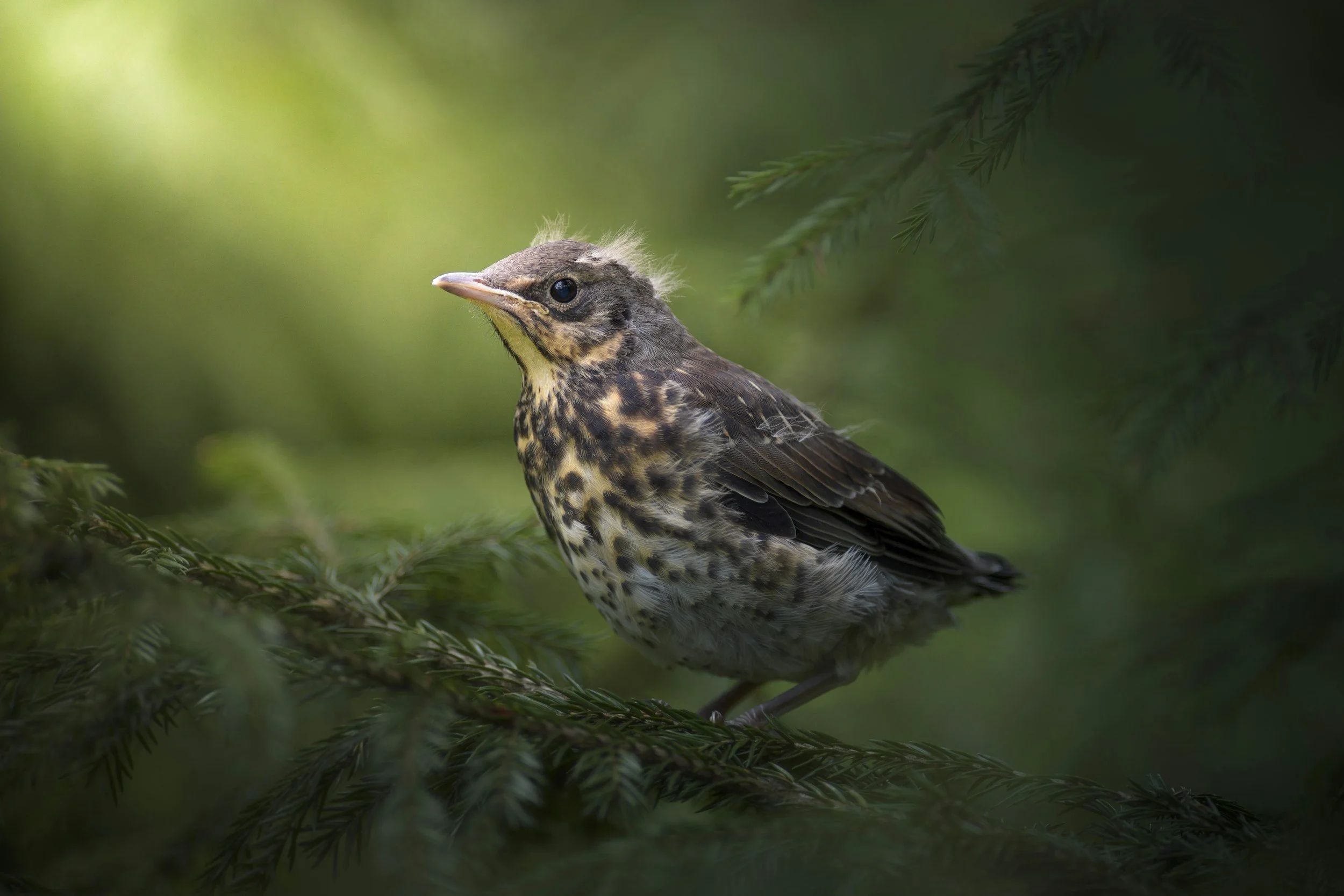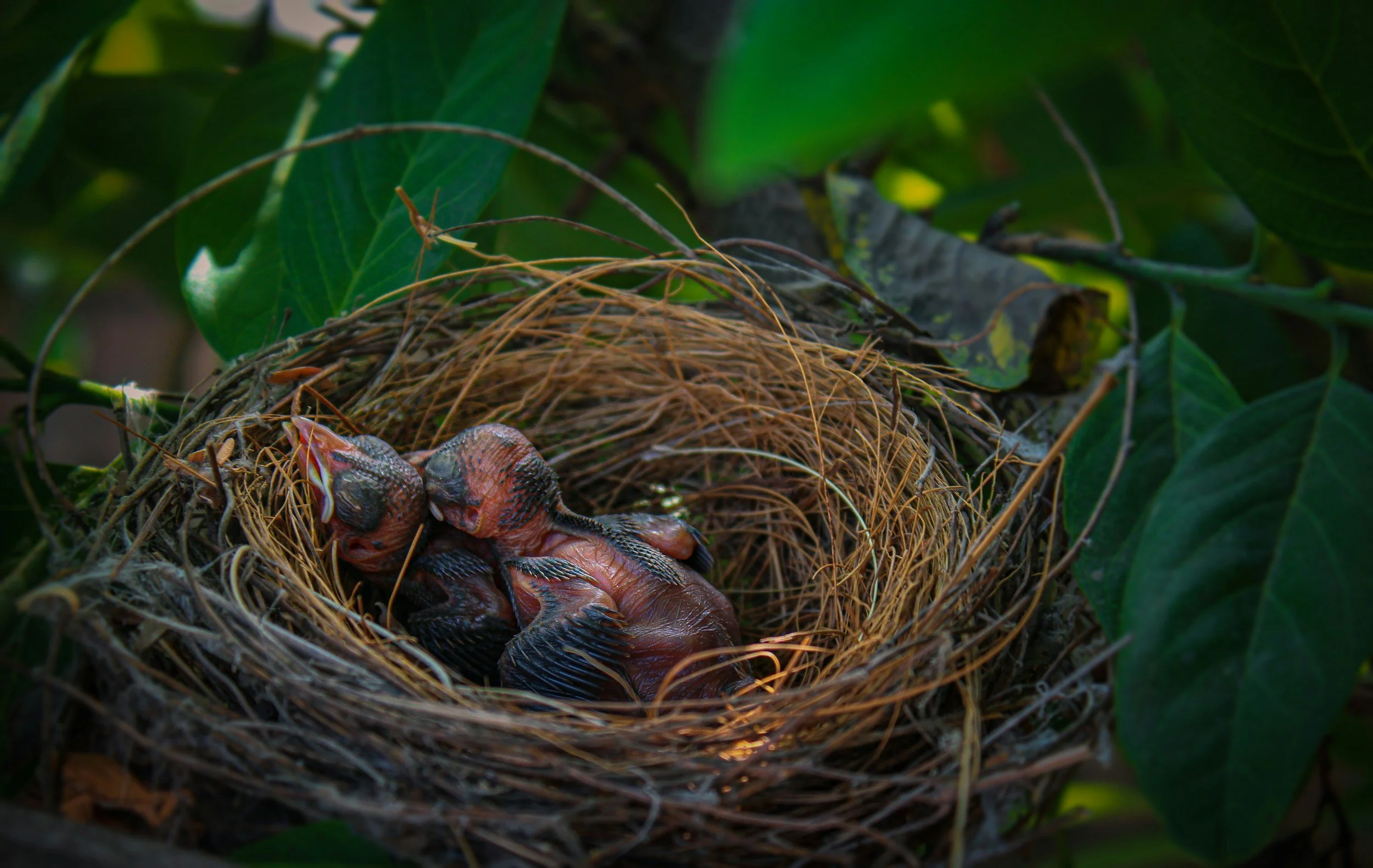Nestling Returns
Spring and summer bring new life to backyards, parks, and forests—and sometimes, that life looks a little lost. If you've ever spotted a baby bird alone on the ground, you may wonder: is it orphaned, injured, or just learning to fly?
Knowing the difference can mean the difference between giving the bird a second chance—or accidentally doing more harm than good.
Spring and summer bring new life to backyards, parks, and forests. Sometimes, that life looks a little lost. If you've ever spotted a baby bird alone on the ground, you may wonder: is it orphaned, injured, or just learning to fly?
Knowing the difference can mean the difference between giving the bird a second chance or accidentally doing more harm than good.
Here’s a step-by-step guide to understanding when to help a baby bird, how to do it safely, and what special considerations apply to raptors, cavity-nesters, and birds that nest in colonies.
Step 1: Is the Baby Bird a Fledgling or a Nestling?
Before taking any action, it's critical to assess the age and development of the bird. This tells you whether intervention is needed—or not.
Fledglings
Mostly feathered, but may still have some fluff
Hopping or fluttering on the ground or low branches
Bright eyes, strong legs, and able to grip your finger or perch
Do not need rescuing unless injured or in immediate danger. Fledglings are learning to fly and being watched and fed by parents nearby. Intervening unnecessarily could separate them from their family.
Nestlings
Very few or no feathers; skin may be pink and bare. Some species, such as hawks and owls, may be covered in fluffy down.
Eyes possibly closed
Cannot perch or hop well; usually found directly under a nest
Need help if found on the ground. They cannot survive long without being returned to the nest
Step 2: Check for Danger Before You Act
Before approaching any bird, scan your surroundings.
Are there predators nearby? Dogs, cats, or people?
Is the bird injured? Bleeding, gasping, or unable to move?
Are you near a road, lawnmower, or construction site?
If the bird is clearly injured or in immediate danger, call a licensed wildlife rehabilitator. Do not attempt to treat injuries yourself.
Step 3: Observe Quietly from Afar
For fledglings, the best thing you can do is give them space.
Watch from 30+ feet away for at least an hour.
If you see a parent bird returning to feed it, leave it alone.
Keep pets and people away.
Remember, fledglings spend several days to a week on the ground while learning to fly. This is normal and essential to their development.
Step 4: Renesting a Nestling
If you determine the bird is a nestling, the next step is to return it to its nest, if you can find it and reach it safely.
To renest a baby bird:
Gently pick it up with a soft cloth. Birds have a poor sense of smell and parents will not abandon it due to human touch.
Locate the original nest and place the baby back inside.
Move away and observe from a distance. The parents should return within 1–2 hours.
If the nest has been destroyed or is out of reach, you can create a substitute nest:
Use a small wicker basket or plastic container with drainage holes.
Line it with dried grass. Do not use fabric or other materials that will absorb water.
Secure it as close as possible to the original location, ideally in the same tree or shrub.
Keep the nest sheltered from sun, wind, and rain, and high enough to prevent predators from reaching it.
Special Situations
Handling Raptors (Hawks, Eagles, Owls, Falcons)
Raptor nestlings can also fall from their nests, but caution is needed. They have sharp talons and powerful beaks, even as babies.
Do not approach without heavy gloves and expert guidance.
Observe from a distance and call a licensed wildlife rehabilitator, raptor center, or local wildlife agency.
Parents are often still in the area and highly protective. Some species, like great horned owls, are known to swoop or strike if they feel threatened. Wear head protection when needed.
Do not attempt to renest raptors on your own. Specialized handling and climbing equipment may be required.
Birds That Nest in Colonies (Swallows, Grackles, Herons, etc.)
Colonial nesting birds often react to disturbances with mass nest abandonment. Returning a chick to a communal nest can frighten the colony, causing others to flee or knock more chicks out in panic.
In these cases, it’s best to consult a wildlife rehabilitator rather than return the chick yourself.
Watch for signs of parental care from a safe distance. If none is observed within an hour, containment may be necessary.
Use caution when handling animals with sharp-pointed bills such as herons and egrets. These birds may use their bill to defend themselves. Use a towel and wear hand and eye protection when handling them.
Cavity Nesters (Woodpeckers, Bluebirds, Owls, etc.)
If a tree with a cavity nest has fallen (or been cut down) you must affix a replacement cavity near the original location.
Use a nest box designed for the species (e.g., bluebird box, screech owl box). If the original tree is available, part of it can be secured vertically to another tree as a makeshift nest.
Mount it to the remaining trunk, nearby tree, or a secure pole at a similar height.
Gently place the nest material and babies inside.
Watch for parents to return within 1–2 hours.
Precocial Birds (Ducklings, Turkeys, Cranes, etc.)
Precocial birds hatch covered in downy feathers, eyes open, and ready to follow mom. They do not return to a nest after hatching and instead stay close to their mother from the start.
Sometimes, a baby gets separated from its family due to traffic, dogs, storm drains, or human disturbance.
If you find a lone precocial bird:
Search nearby for the mother and siblings. It is likely that the group is still close by. If safe, you may gently encourage the baby toward them.
If you see the mother, do not place the baby directly into the group. Instead, allow it to approach on its own, as sudden interference may spook the mother or siblings.
Do not put baby birds in water, even ducklings. Young birds can become chilled or drown without waterproofing oils from their mother.
If the mother or other siblings react aggressively towards or are avoiding the baby, it may be the wrong family group.
If the family is not located within an hour, it may need to be taken to a licensed wildlife rehabilitator.
Lone babies should never be raised alone. They are highly social and require other babies of the same species and species-specific care to develop properly.
When to Call for Help
Always contact a licensed wildlife rehabilitator if:
The bird is bleeding or injured
You can’t locate the nest or renest safely
The parents haven’t returned after 1–2 hours of quiet observation
The baby is in immediate danger and cannot be safely moved
You are unsure of the bird’s age or condition
Find help using:
Final Thought:
In most cases, the best thing you can do is observe, protect, and let the bird’s parents do their job. Baby birds are fragile, and while our instinct is to help, intervening too soon or too much can unintentionally separate them from the very care they need most.
Watch from a distance. Call a rehabilitator for guidance.




